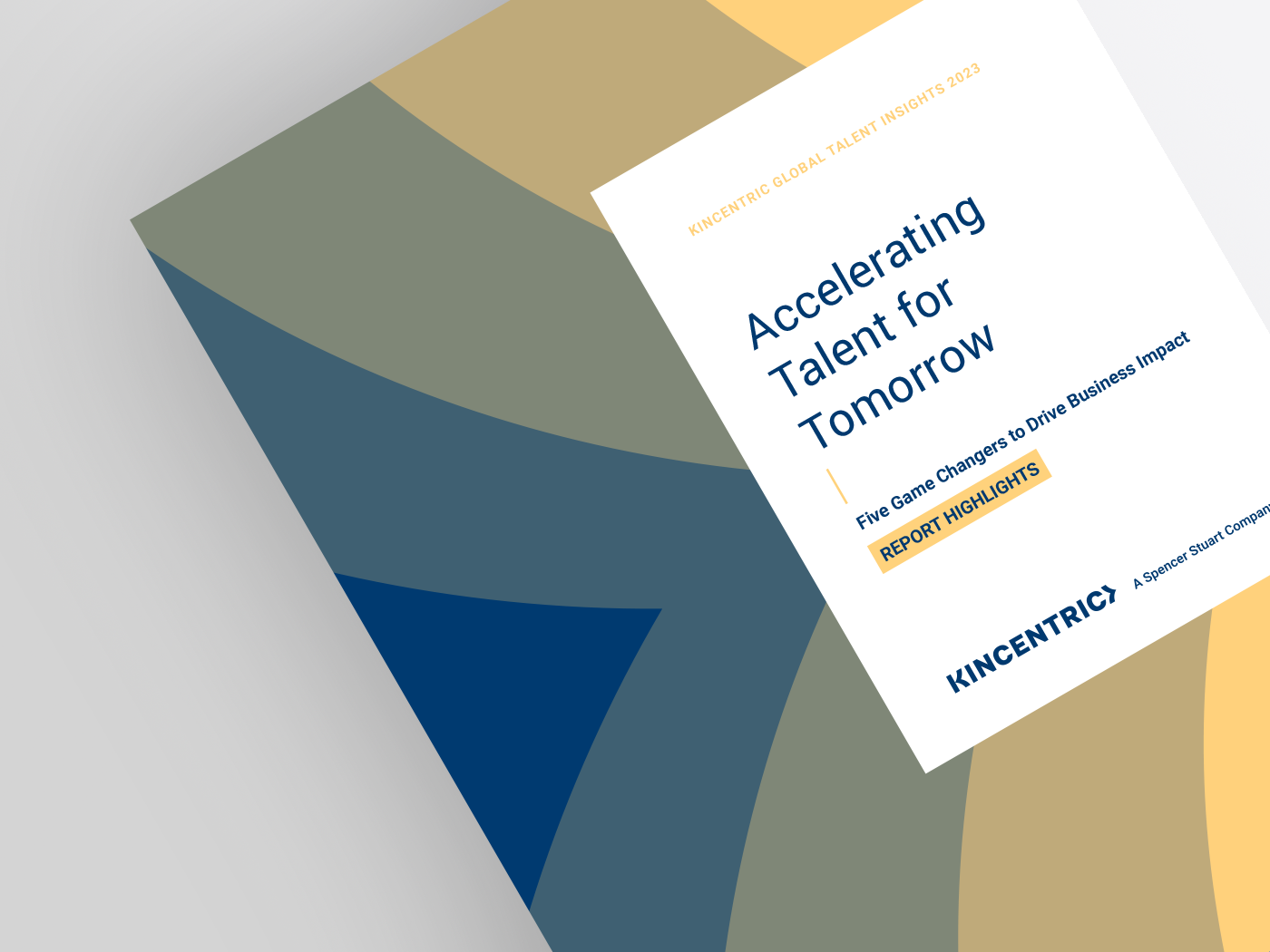
To successfully compete in a constantly changing environment, organizations must act now to ensure closer alignment between business and talent strategies and provide a clear articulation of the capabilities, skills and mindsets required to accelerate their Talent for Tomorrow. The focus must shift to attracting and developing talent and leaders in new ways, while building practices and processes that will enable people to thrive, innovate and drive business outcomes, even when faced with uncertainty. The time for change is now and the need for organizations to invest in future-ready talent has never been clearer. However, what is less clear is how leaders and HR will work together to address the challenges.
To better understand how organizations are staying ahead, Kincentric held a series of conversations with Chief Human Resources Officers (CHROs) and talent heads in leading organizations globally to gain deeper insights around the critical importance of people and talent in driving business outcomes. Based on these conversations, we’ve identified five game changers that will guide organizations as they shift their talent practices, models and mindsets to create future-ready organizations.
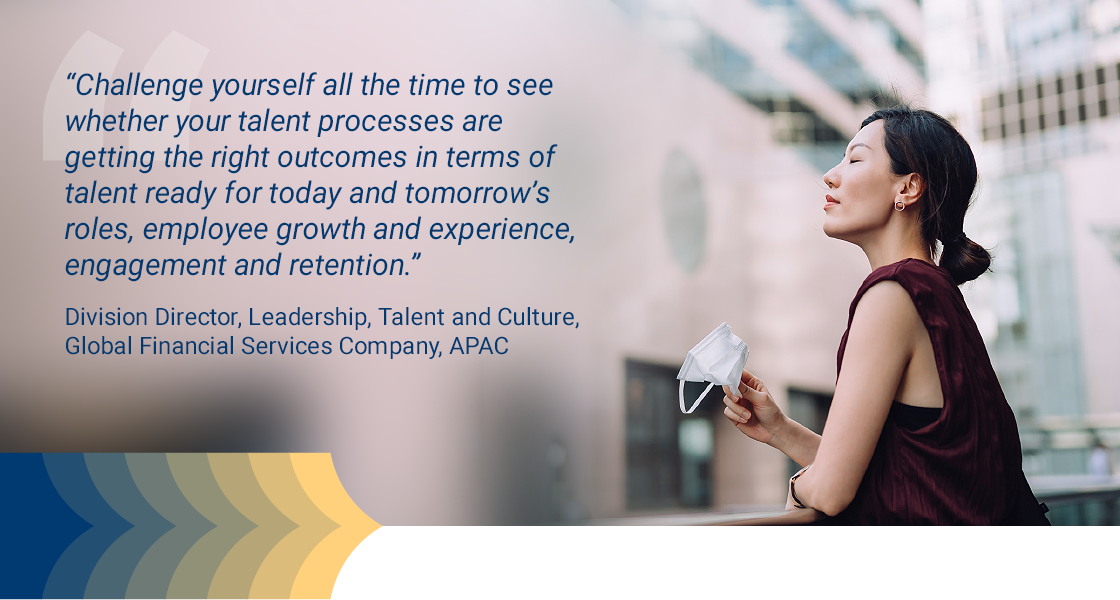
Make culture your competitive edge for attracting and retaining talent
As the competition for talent continues to intensify, ensure your culture has evolved to meet the expectations of the new employment deal. Your Employee Value Proposition (EVP) is no longer just about recruiting. A bolder and more authentic EVP that’s rooted in your culture and values will act as a powerful tool for both attraction and retention. Leading organizations recognize that the quest for talent requires differentiation and competitiveness. Purpose alignment, an experience of belonging and a strong value proposition is key. Conducting a culture assessment will help determine if you are driving the right employee experience. By listening and acting on feedback, you can rejuvenate your EVP and make it come alive throughout your talent practices and across all aspects of the employee lifecycle.

Transform the talent you have into the talent you need
Organizations will require people (not just high potential talent) who can function in a collaborative and agile way in a rapidly changing environment and who have the organizational capabilities and skills needed for the future of your business. Start by identifying these capabilities and skills and then shift mindsets and approaches to creatively transform the talent you have into the talent you need. Create an open and transparent internal talent marketplace that identifies existing employees for new roles and opportunities. Then ensure your career development philosophy and priorities are aligned. Focus on the development and upskilling of existing talent, promote internal career mobility and dig deep to activate succession planning. This requires a notable leadership shift to a collective accountability for developing and sharing talent. Prioritize “learnability” in both internal and external candidates as this will enable you to upskill your talent more readily. Ensure you are building in attitudes focused on the future, including readiness for change and self- responsibility for development.

Realize that future-ready talent will need future-ready leaders
You can’t enable the talent of tomorrow without an equal focus on the leaders of tomorrow. Organizations must develop future-ready leaders equipped with new superpowers around resiliency, growth mindset and openness to change. Invest in leadership training for first-time and mid- level managers, and proactively look to ease the squeeze on managers by simplifying talent practices and focusing on outcomes that will enable business success. Support leaders at all levels with the incentives, tools, skills, self-confidence and determination needed to become caring, engaging and inclusive – so they can effectively build organizational resilience, inspire their teams and accelerate talent development.
of Talent Leaders said that leadership development is a priority

Integrate DEI across all facets of talent and leadership
Organizations should prioritize DEI and understand how it can open a world of new opportunity when it comes to talent. Proactively look for ways to integrate DEI across all facets of talent and leadership to create a fair, inclusive, equitable environment that people don’t want to leave. When diversity, equity and inclusion are mainstays of its culture, an organization can accelerate talent outcomes and increase innovation, customer satisfaction and profitability. It’s a win-win. And make sure you recognize the difference between each of the three constructs of diversity, equity and inclusion − and how each concept impacts talent and leadership at your organization.
Globally,
of leaders ranked DEI as a critical business priority. DEI is also a top priority for the Board and executive team.

Stay ahead of the curve with talent insights and analytics
With a universal focus on digital transformation as a business priority, executives and HR leaders must increase digital skills across the organization, including their own. To really hit the mark in preparing your people and organization for the future, leverage talent analytics tools to help make informed people decisions, prioritize investments and demonstrate the impact of talent. Ensure your teams are well equipped to utilize these insights to effectively tell the talent story, engage leaders in compelling ways and provide them with the insights needed to truly evolve your talent of tomorrow.

Identify your game changers that will make the most impact
To accelerate the talent of tomorrow, the time to act is now. With your business strategy as the anchor, identify the opportunities to implement the game changers outlined above and identify new ones specific to your organization’s needs. Adopt new approaches and prioritize the people practices that will drive the greatest value now and in the future. Instill key enablers around governance, leadership, talent capabilities and infrastructure, including HR technology and analytics. And don’t forget about change management. Take this opportunity to make your talent strategy a game changer for your business.

Kincentric held a series of conversations with Chief Human Resources Officers (CHROs) and talent heads in leading organizations globally, representing 15 industries. Given their combined 180+ years of talent expertise, we appreciated the breadth and depth of knowledge that these executives shared. During the conversations we explored critical business priorities and how the talent strategy has shifted to meet changing business needs. Each talked about top talent priorities, barriers and enablers, delivery methods, key stakeholders and best practices.
We would like to thank Michael Martin for contributing his insights to this article.
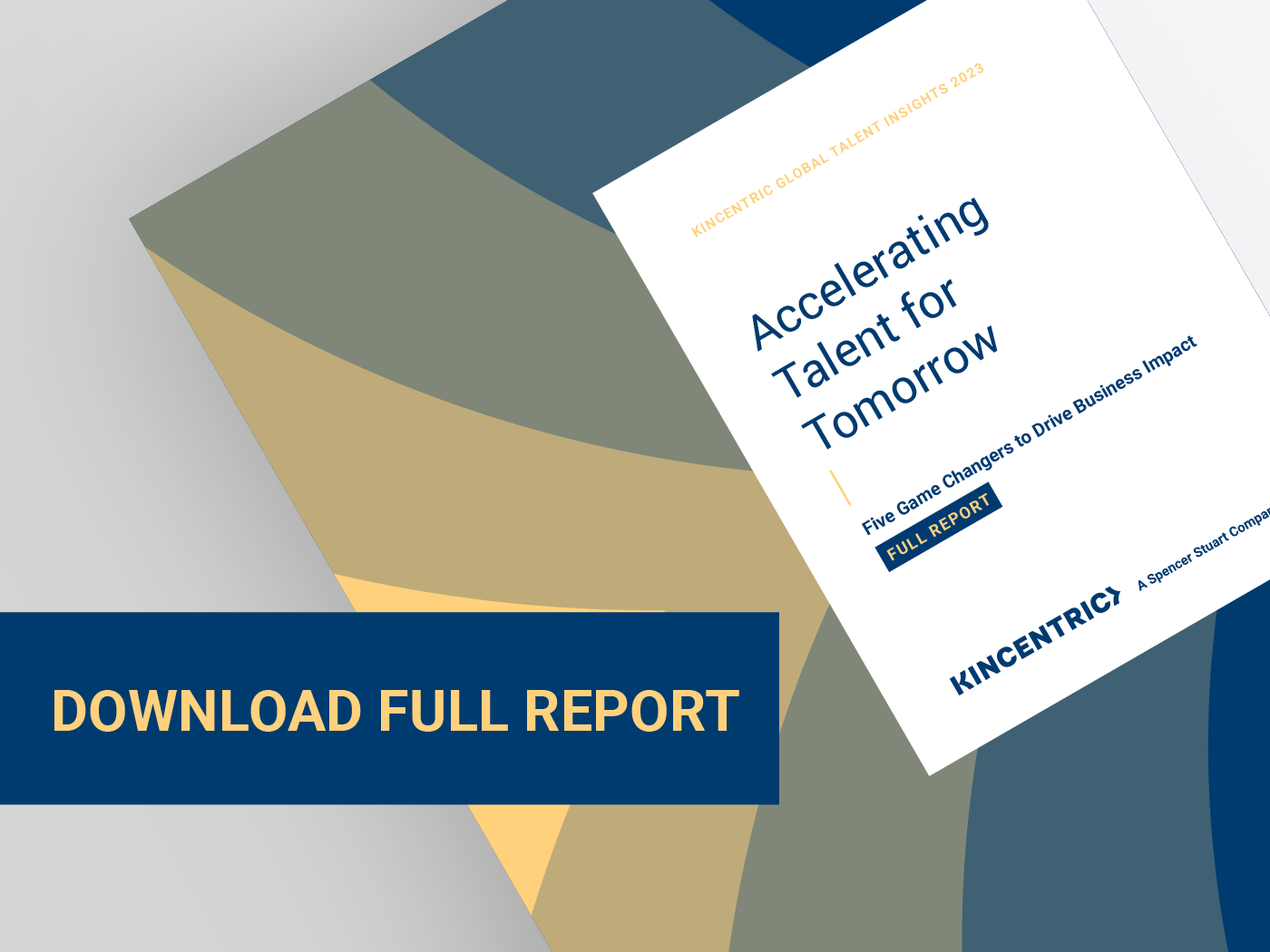
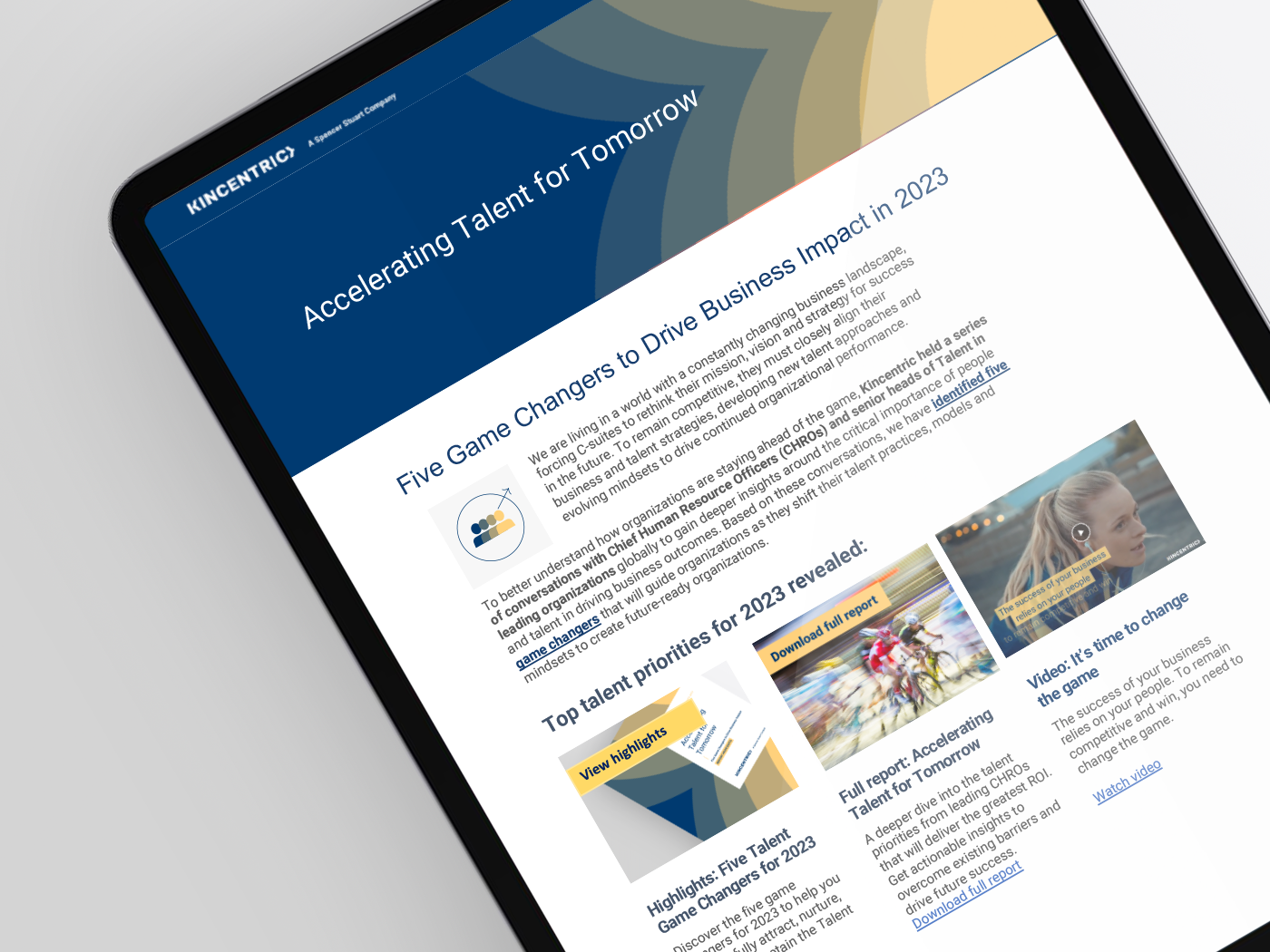
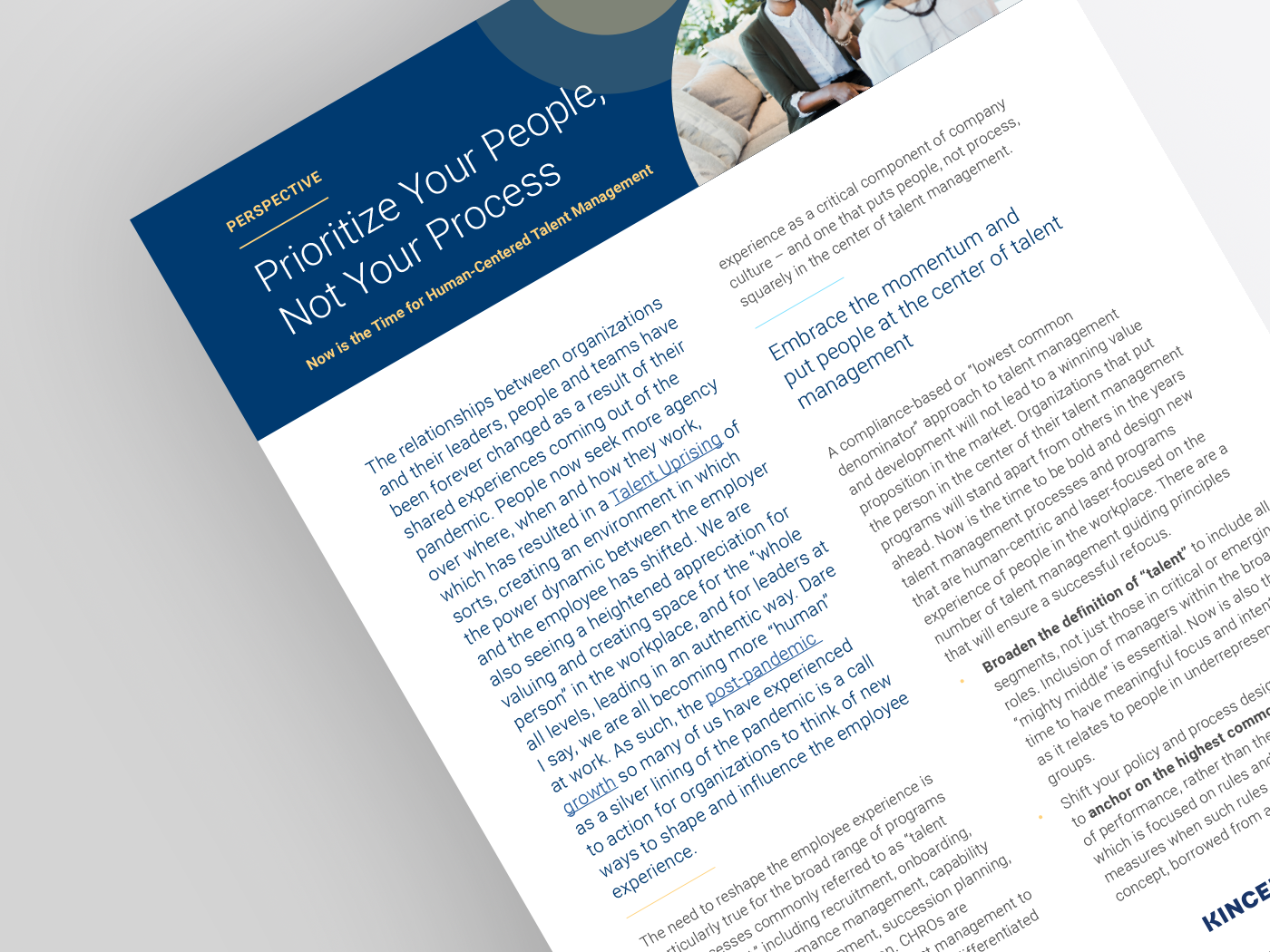
Want the latest insights delivered straight to your mailbox?